About Rostov Veliky
Rostov Veliky is one of the most ancient cities of Russia. This modest number of inhabitants Russian city rightfully proudly calls itself Rostov the Great. The magnificent monuments of architecture and monumental painting that have survived to our days, the famous Rostov bells are the glory and pride of all Russian art.
The person who visited Rostov the Great for the first time has deep and unexpected impressions. As we approach the ancient city, gilded poppy-churches of churches and the white fortress walls of the Great Rostov Kremlin are flashing brighter in the sun. In each building of the Rostov Kremlin – whether it is the majestic fortress walls with eleven towers, spacious white-stone chambers or ancient temples painted with wonderful frescoes, Russian masters have invested inexhaustible fantasy and skill. Since the construction of the Rostov Kremlin immediately became one of the main Russian attractions. He now admires his unique beauty, richness of architectural forms, intricate variety of gilded domes. This is one of the most popular places for filming feature films and documentaries (“Ivan Vasilyevich Changes Profession,” “Thirty Three,” “Tavern on Pyatnitskaya,” etc.).
The majestic five-domed building of the Assumption Cathedral towers on the oldest Cathedral Square in the city. It was built at the beginning of the 16th century, on the site of the formerly former wooden cathedral church of the 10th century and white stone temples.
At the end of the 17th century, at the command of Metropolitan Jonah Sysoyevich, a belfry was built, on the bells of which the Rostov bells, known all over the world, are performed. There are a total of fifteen bells on the belfry, a unique set that has survived to the present, whose bells in calm weather are heard within a radius of twenty kilometers around the Kremlin.
But the Kremlin, the Assumption Cathedral and the belfry are not all that you can see in Rostov. The monastic ensembles of Rostov the Great delight and fascinate. On the shore of Lake Nero, you will see the ensemble of the Holy Avraamiev Epiphany Convent. This is one of the oldest, preserved monasteries in Russia. It was founded somewhere around the turn of the 11th and 12th centuries.
The magnificent ensemble of the Spaso-Yakovlevsky Dimitriev Monastery amazes with its grace and extraordinary harmony. Being under the walls of the monastery, you see the power, solidity, the fundamental nature of its buildings. If you climb the high monastery wall, you will see a wonderful panorama – the vast expanse of Russian land everywhere. On the territory of the monastery there is a holy spring, where you can quench your thirst.
Another Rostov shrine is the Trinity – Sergius Varnitsky monastery, which was founded in 1427 at the birthplace of St. Sergius of Radonezh. The monastery is located on the outskirts of Rostov the Great, 6 kilometers from the city center. On the place where the monastery is located, the estate of the parents of St. Sergius, Saints Cyril and Mary, was located, his childhood passed here. The architectural ensemble of the monastery is a worthy monument at the birthplace of St. Sergius.
Just a few versts from the monastery, a little away from the Moscow road, among the grasses, on the banks of the small river Ishni stands the wooden church of St. John the Divine. Like a ship, it grows on a picturesque bank of a once deep-water river. It is one of the few in the Central part of Russia and the only well-preserved monument of Russian wooden architecture from the 17th century in Yaroslavl.
In addition to the majestic Kremlin, monastic ensembles and temples in Rostov there are many interesting monuments of religious and civil architecture. Architectural monuments of Rostov the Great continue their life in the modern city, filled with new life, invisibly connected with the present day. They are silent witnesses of the past and the present, and the Rostovites carefully and anxiously care about their preservation.
Today Rostov is a developing tourist center. New hotels are being built, a network of restaurants and cafes is constantly developing, the level of service is improving. Tourists visiting Rostov can not only enjoy its beauty, but also have a good rest and have a good time. Every year, traditional tourist holidays are held in the city: the Winter tourist festival “Wide Shrovetide by Pike” (February – March), the music festival “Living Antiquity” (the first weekend of June), the folklore festival “Sarafanny Dancing” (mid-June), the balloonists festival on thermal balloons “Golden Ring of Russia” (mid-July), fair “Rostov souvenir” (last weekend of August).
Rostov is famous for its artistic craftsmanship. Rostov enamel – a unique folk craft, traditionally existing only in Rostov – is valued and known not only in our country, but also abroad. In Rostov, you can visit the only museum in Russia, where the visitors can see the entire history of the development of the enamel in the works of the best masters, the interior of the first master’s enamel hut has been restored. Considerable interest will cause you and visit the house of creativity “Horse”. There is a home museum of Russian life, an exhibition of contemporary art, and a permanent exhibition of artistic enamel.
In the historic center of Rostov Veliky, on the bank of Lake Nero, is located the House of Crafts. Your eyes are constantly offered amazing exposure to black-glazed ceramics, products made of birch bark, wood sculpture, wood carving and much, much more. Here you can not only enjoy the beauty of products and purchase your favorite exhibit, but also take part in the manufacture of products. Next to the territory of the Nativity of the Mother of God Convent is the Creative Workshop of a member of the Union of Artists of Russia, Enin Oleg Ivanovich. In the artist’s studio themed exhibitions, master classes, meetings and evenings are held.
Welcome to Rostov the Great!
Sights of Rostov the Great
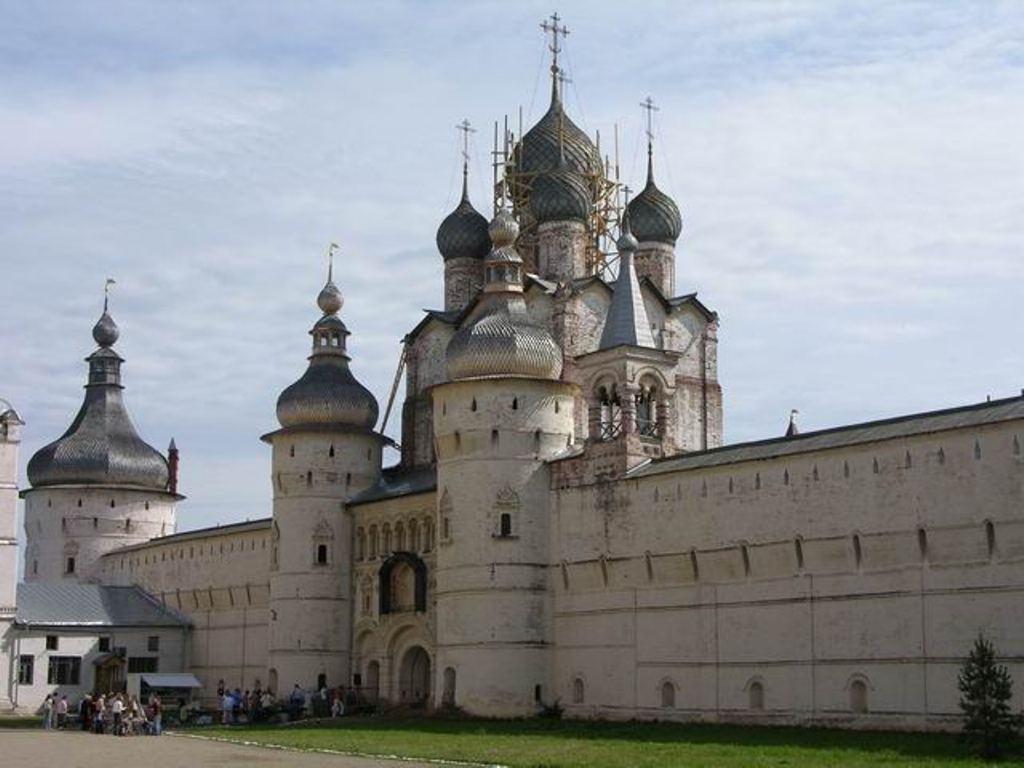
The Rostov Kremlin, XVII – XVIII centuries.
The Rostov Kremlin was originally the residence of the bishops of the Rostov-Yaroslavl diocese. Currently, the Rostov Kremlin is divided into three independent zones: the Bishop’s court itself, the Cathedral square adjacent to it from the North and the Metropolitan garden from the South.
Working hours: 10:00-17:00 seven days a week.
Phone +7 (48536) 6-17-17
Site: www.rostmuseum.ru
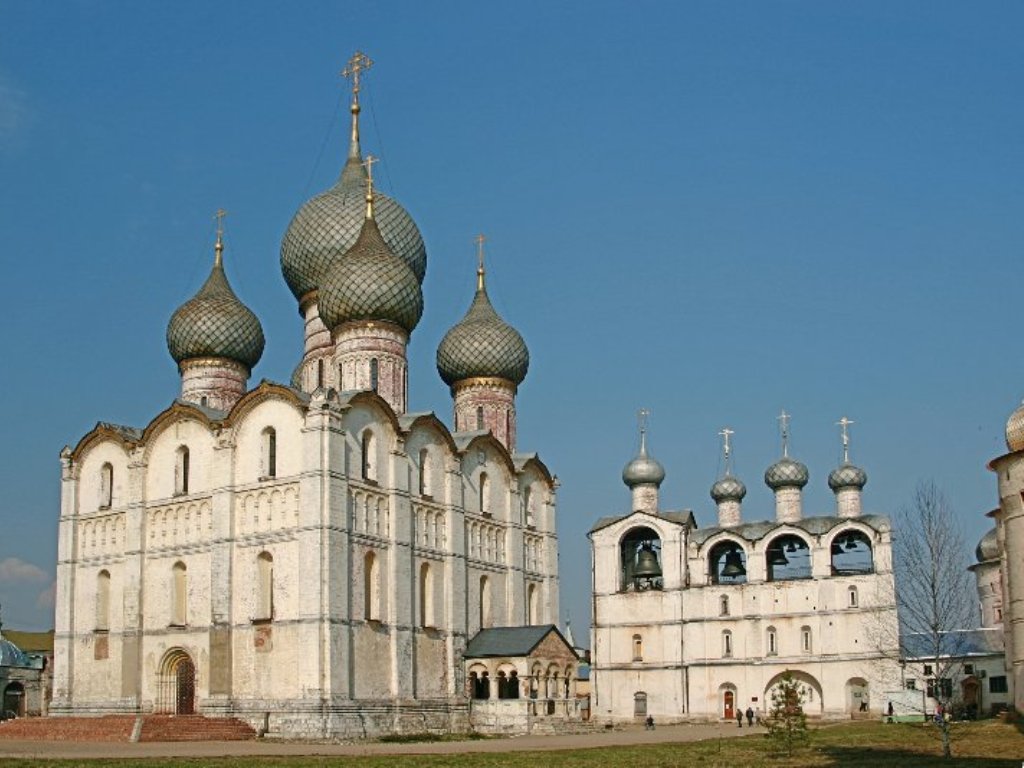
The Cathedral of the assumption, the beginning of the XVI century.
Former Cathedral of the Rostov-Yaroslavl diocese. Located in the Rostov Kremlin. It has its own free-standing belfry. Together with the Kremlin, form a single Central architectural ensemble of the city, the view of which is particularly remarkable from lake Nero.
The time of construction of the first wooden Church on this site is unknown. However, in 1160 it was destroyed by fire. In the following year, 1161, at the behest of the Grand Duke of Vladimir Andrei Bogolyubsky was started construction of white stone building, which was destroyed by fire in 1204. The new building took 17 years. Another strong fire occurred in 1408, the vaults and the head of the Cathedral collapsed. After that, it was again restored from white stone. The modern brick Church was built in 1508-1512.
Belfry. In 1682-1687, under Metropolitan Jonah to the South-East of the assumption Cathedral, a belfry was built, crowned with four heads and having 15 bells, the largest of which, Sysoy, has a mass of about 2000 pounds. A set of bells has survived to the present time. The Sysoy bell was cast by master Flor Terentyev in 1688. The second weight of the bell “Pollany” weighs 1000 poods, the third, “the Swan” — 500 pounds. On these bells was recorded in 1974 disc “Rostov bells”, which was a noticeable phenomenon in the cultural life of the country.
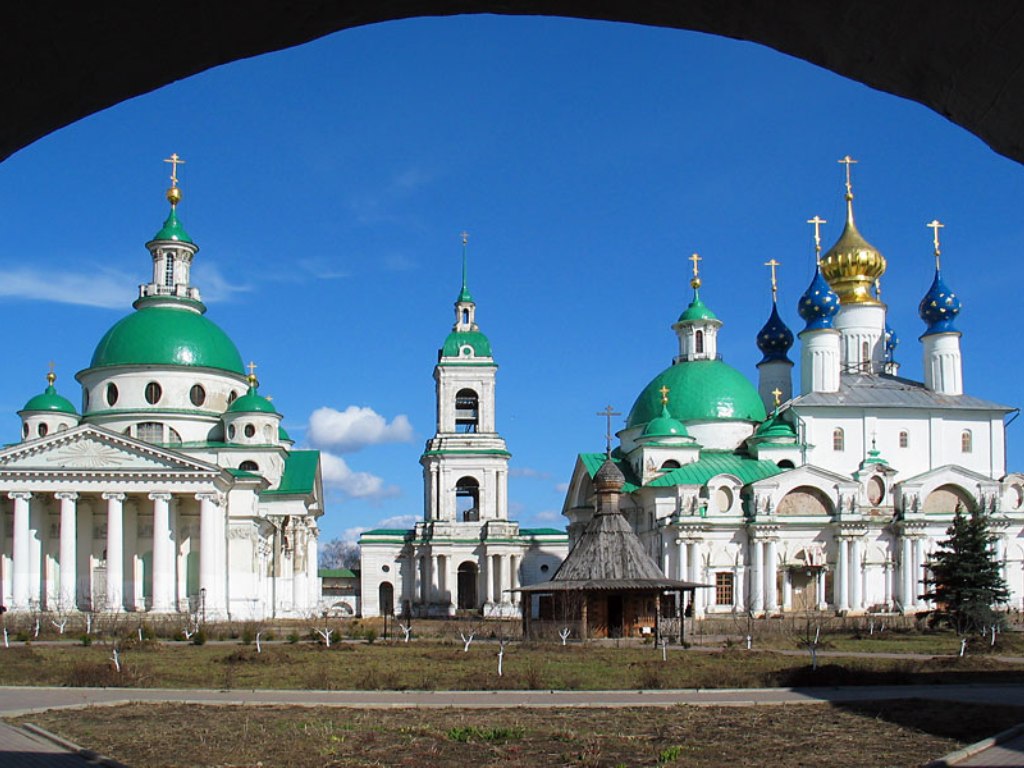
Spaso-Yakovlevsky Dimitriev monastery, XVIII – XIX centuries.
Orthodox monastery. Located on the shore of lake Nero in the South-Western part of Rostov. Founded in 1389 by Rostov Bishop St. James, expelled from the city by his flock for the pardon of a criminal awaiting execution, Jacob with his own hands cut down a small wooden Church and consecrated it in honor of the Conception of the blessed virgin. Soon a small community of like-minded people of the exiled Bishop was formed near the Church; thus a new monastery was formed.
Tel. +7 (48536) 7-43-69
Site: www.rostov-monastir.ru
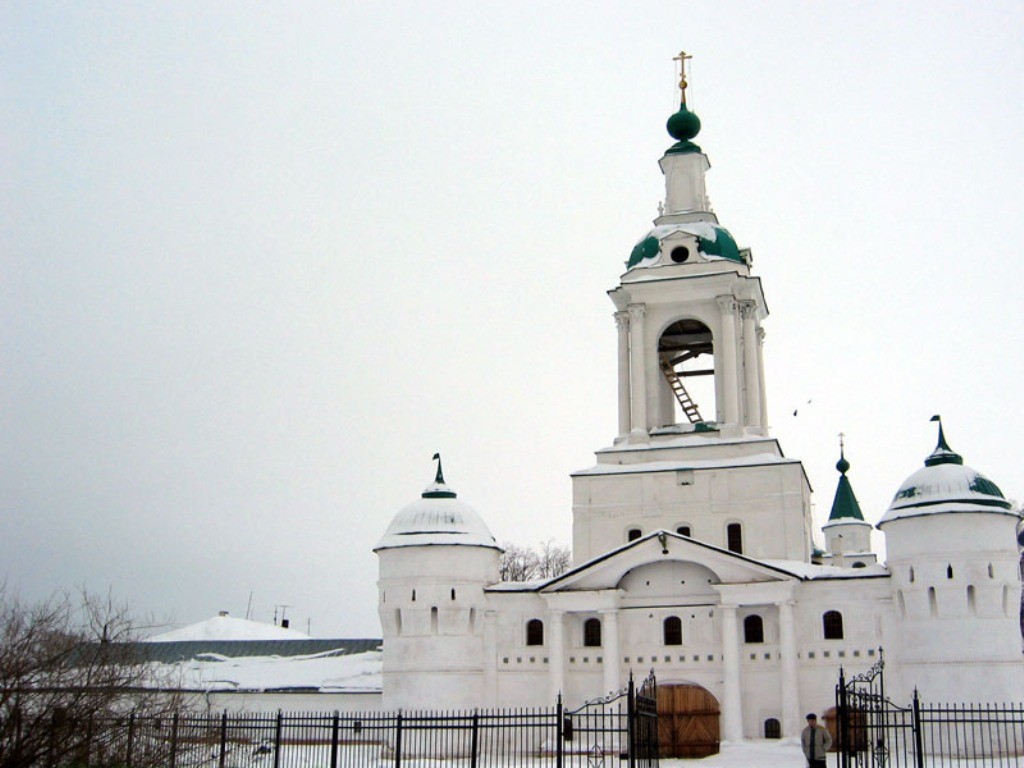
Abraham monastery, end of XVI – XVII centuries.
In the Eastern part of the city preserved part of the buildings of one of the oldest monasteries of North-Eastern Russia — Abraham, founded more than eight centuries ago. According to legend, it was built on the site of the temple of the idol Veles. The monastery was first built to fight idolatry and built to defend the city, then it became the center of the spread of Christianity and a stronghold of the monastic way of life.
From time immemorial, the monastery kept the rod, given, according to legend, a disciple of Christ John Abraham, who crushed the rod of the idol of Veles. Ivan the terrible, going to the next campaign to the Kazan khanate, stopped in Rostov and took with him a rod from the Avraamievsky monastery, counting on his miraculous power. In the autumn of 1552 he laid siege to Kazan, the capital of the khanate. After a long siege and heavy fighting Kazan fell. In those days, churches were built in honor of the most important events in the political life of the state. It is known that such a monument in Moscow, built at the behest of Ivan IV after the capture of Kazan, was the Church of St. Basil on red square. But few people know that in Rostov at the same time there was his “younger brother” — Epiphany Cathedral, also built at the behest of Grozny in 1553-1554 years at the expense of the sovereign’s Treasury in the monastery of Abraham. It was the Royal gratitude of the monastery for its “Wonderful” rod contributed to the conquest of the “infidels”.ww.rostov-monastir.ru
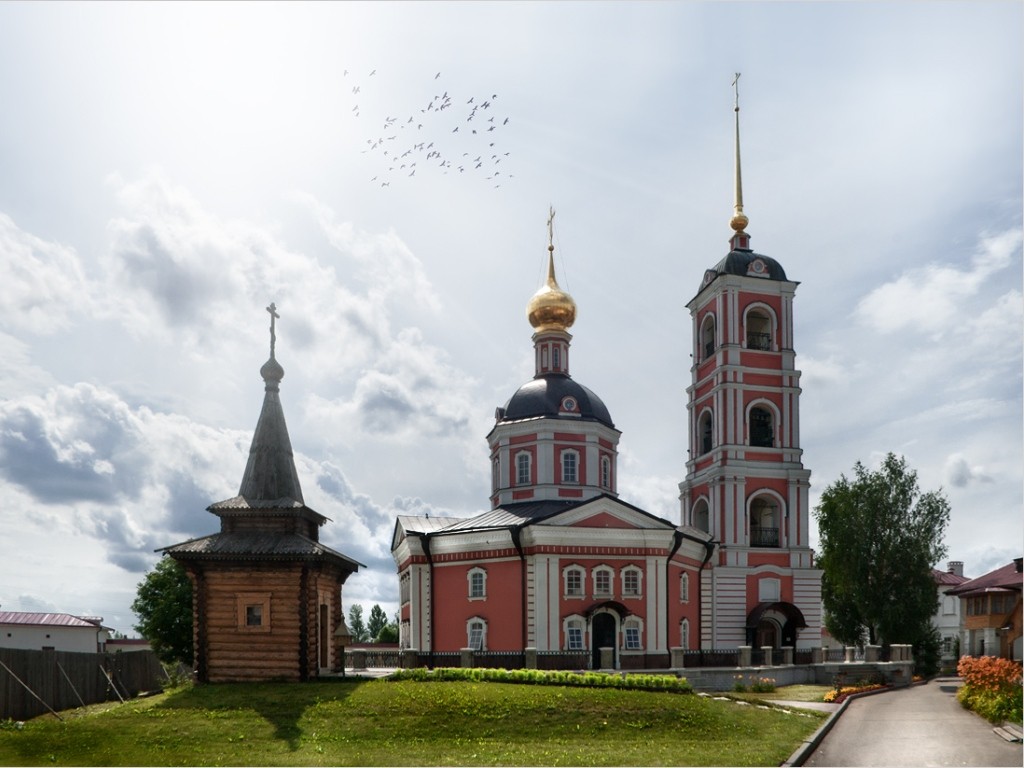
The Trinity – Sergiev Varnitsky the monastery, XVII-Xixvv.
The monastery of the Russian Orthodox Church, located near Rostov the Great. As a compound of the Holy Trinity Sergius Lavra is under the direct jurisdiction of the Patriarch of Moscow and all Russia. Trinity-Sergius Varnitsky monastery was founded by Archbishop Ephraim of Rostov in 1427 in Varnitskaya Sloboda on the outskirts of the city of Rostov on the birthplace of the Holy Russian Orthodox Church of St. Sergius of Radonezh, five years after the discovery of the relics of St. Sergius.
Tel. +7 (48536) 9-21-95
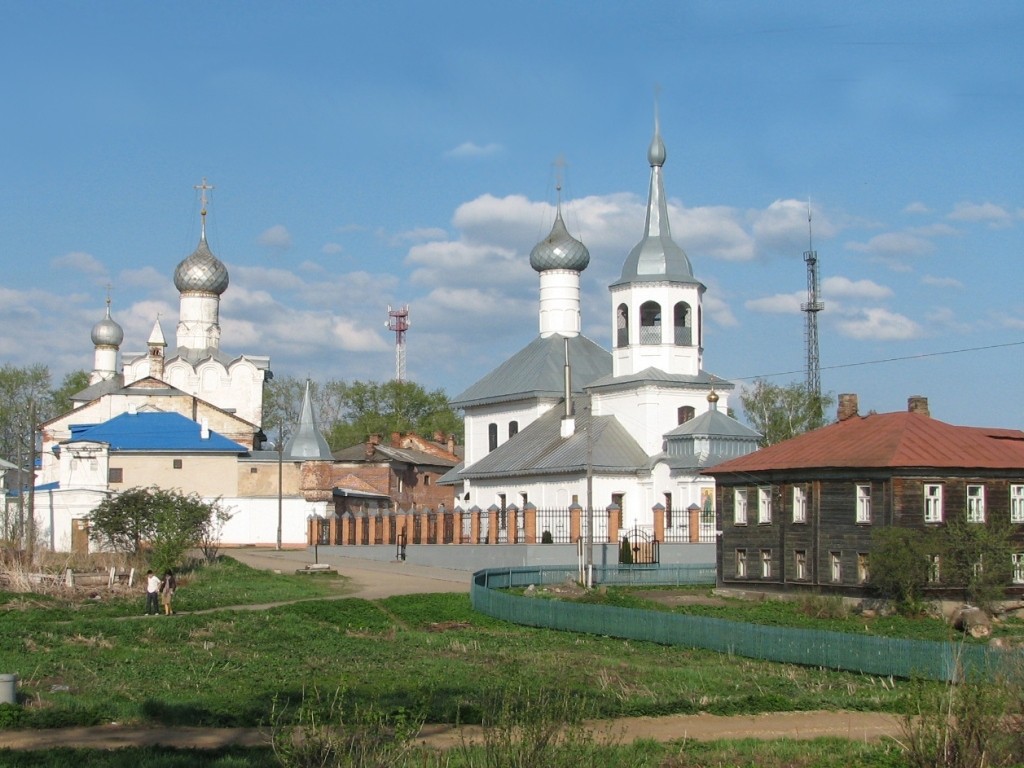
Nativity monastery, XIV century.
Founded in the XIV century by the Holy Archbishop Theodore, nephew of St. Sergius of Radonezh. Until the XVII century all the buildings of the monastery were wooden. The beginning of stone construction dates back to the end of the XVII century, when the Metropolitan was Jonah Sysoevich. The first stone Church was built in the name of the Nativity of the virgin, this extensive two-storey building in addition to places of prayer has a spacious refectory.
Numerous alterations and losses (demolished, destroyed five heads of the gate Church of the Tikhvin mother of God — the mid-nineteenth century, the preservation of the towers and partial walls) have distorted the monument. But also in the General architectural forms which have reached us it gives the concept of art taste of an era and existence of talented architects in Rostov. There is an assumption that the Church of the Nativity and the Savior on the Auction built the same masters as the Kremlin churches.
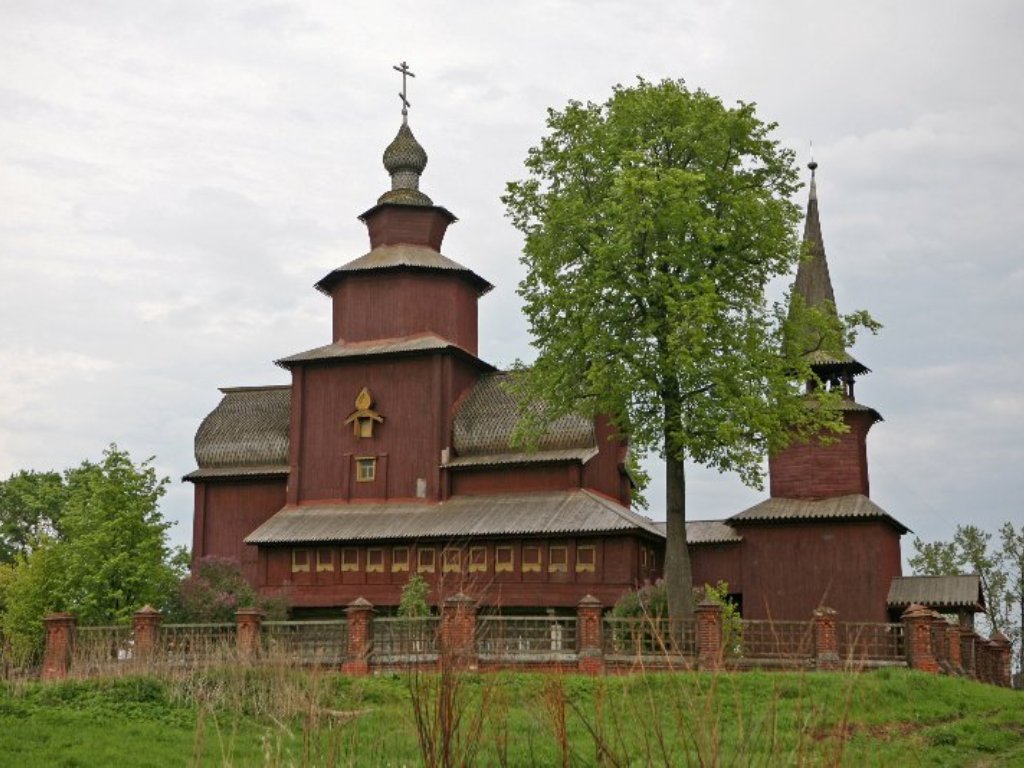
Church of John the theologian on ishna, 1687-1689
The entrance to the temple is decorated as a portal with a keel arch. The old days, the distant past blows here. From the four-tiered iconostasis look darkened faces of the saints. Only specially looking as tight fitting grooves, solid floors, typed in “herringbone” from small plates to the ceiling. But the original decoration of the temple – carved gilded Royal gates – the fruit of the work of the weightless monk Isaiah.
One of the most famous and important in the history of Rostov legends is connected with the construction of the temple on ishna. It is known to us from the life of St. Abraham of Rostov, the founder of the Epiphany monastery of Abraham. It was in those days when paganism was very strong in these places, and many people worshipped the stone idol of the God Veles. The Saint could not even approach the idol, overcome by devilish delusions. Finally, through his prayer, an old man appeared to him, who advised Abraham to go to Tsargrad and pray there in the Church of John the theologian. The Saint was very upset because the road was long, and he would not soon be able to defeat the idolaters in Rostov. But nevertheless he got up and went. No sooner had he crossed the ishnu River than he met another elder who questioned him about his intentions and handed him his staff with the words: “Take my cane and come to the idol of Veles, overthrow him with this cane in the name of John the theologian, and he, damned, will crumble to dust.” Then Abraham realized that before him was John the Theologian himself. He did everything as the Saint told him, and then, at the place where he met him, he set up a Church in the name of John the theologian.
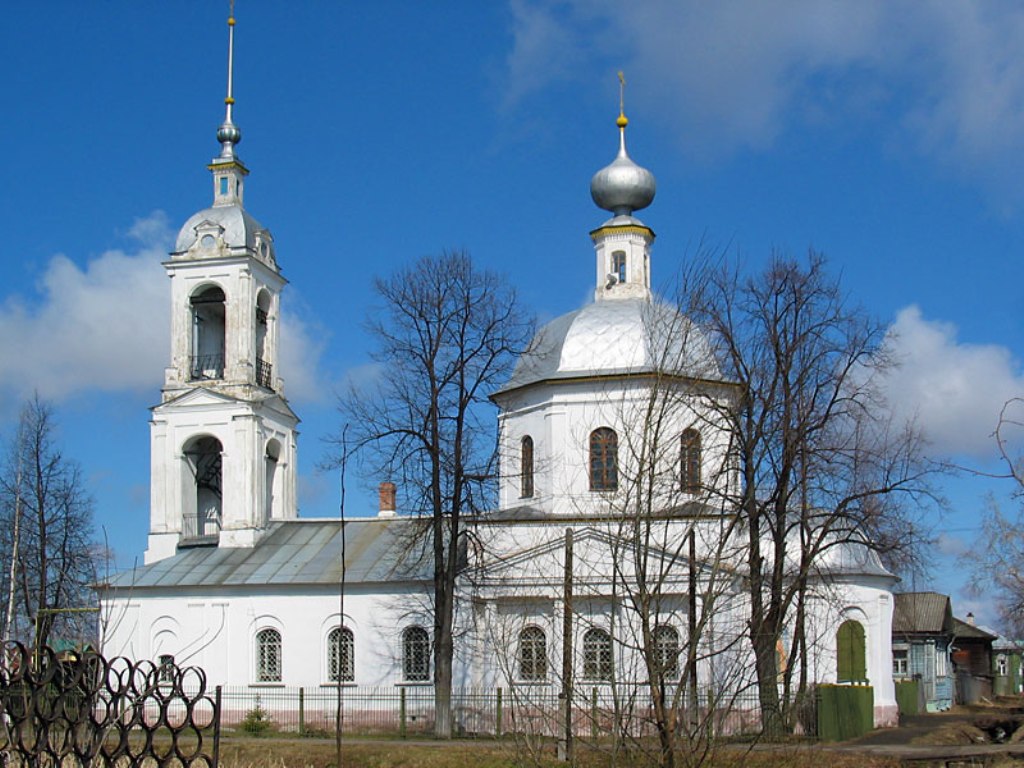
The Church of St. Nicholas in-the-fields, 1813.
Parish Church, built in 1813. In the XVII century on this place there was a wooden tent Church, and even earlier there was a monastery. In its architecture features of classicism are noticeable: facades are decorated with porticoes with four columns each, with pediments. From the West to the Church adjoins a two-tier bell tower. In the temple there are ancient icons of XV and XVI centuries.
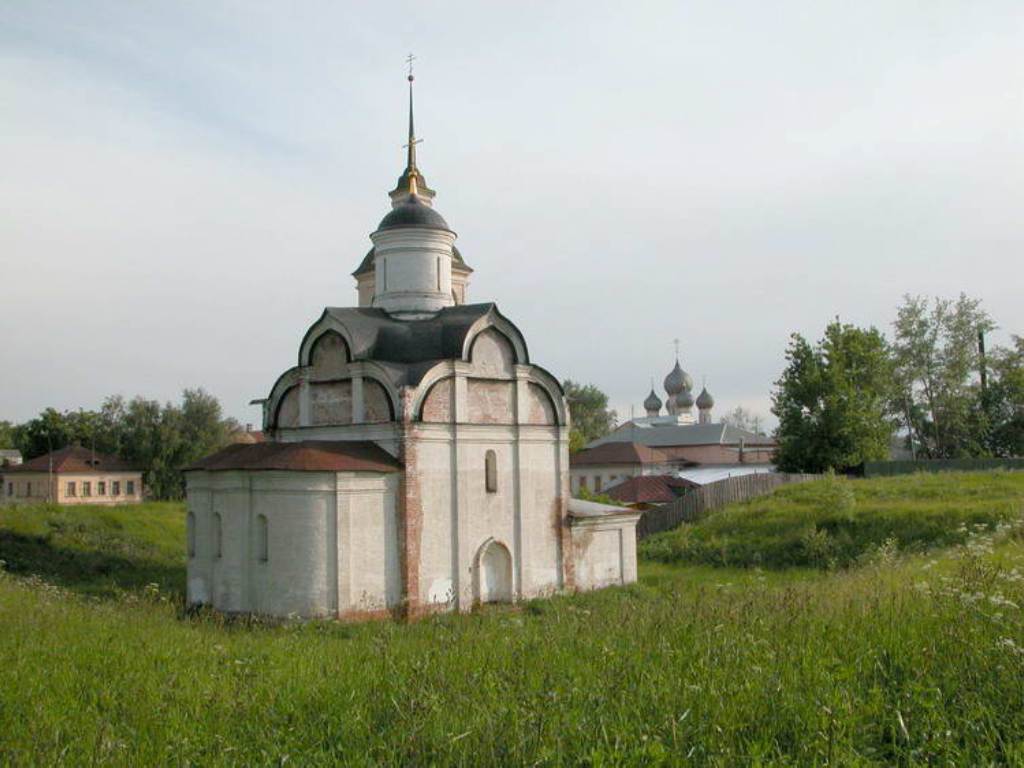
Church of the ascension, 1566
Church of the ascension, otherwise called Isidore the blessed – one of the oldest stone temples in Rostov. Earlier in the Church there was a stone slab with a temple inscription, which said that the Church was built in 1566 by order of Tsar John the terrible under Archbishop Nikandra of Rostov. The inscription mentioned the name of the architect – Andrew Small. The Church was built on the site of the burial of blessed Isidore, his Holy relics are buried in it. In its architecture, the Church has much in common with the Moscow Posad churches of that time.
Site: www.isidor.pro
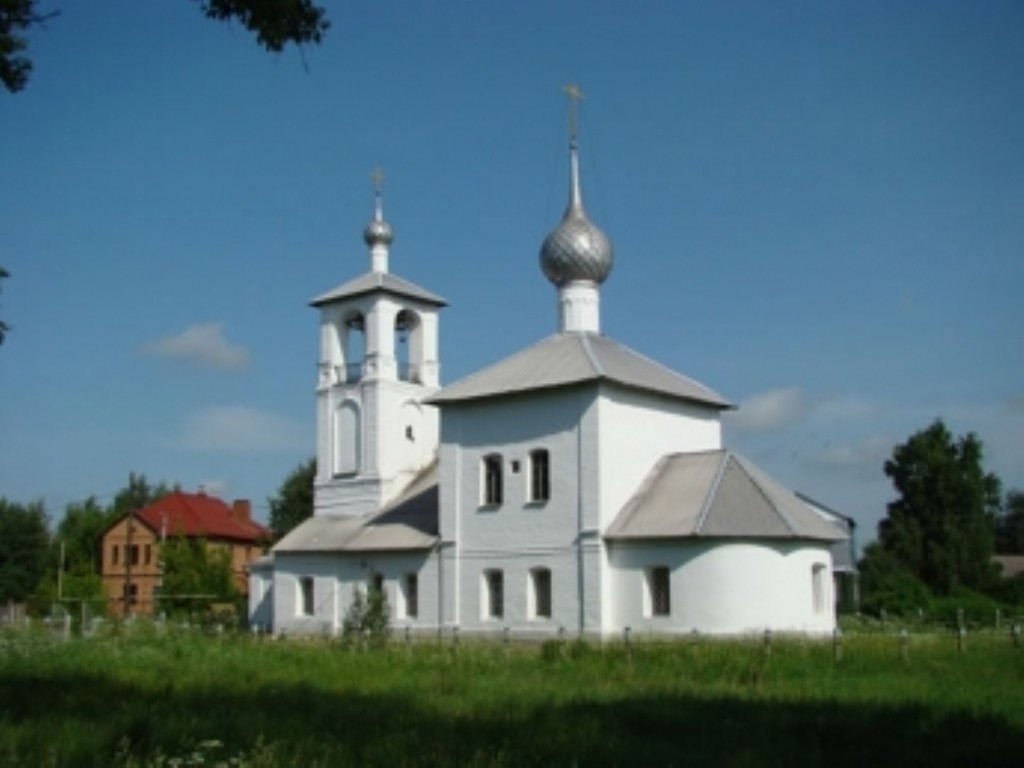
Church of our lady of Tolga, 1761
The Church in the name of John the merciful was originally called the temple of the tolg icon of our lady and was built in 1761. The temple is small and was a parish. His wedding was carried out with the help of one cupola, and there was a “modest” two-tiered bell tower, which was built at the expense of parish residents from Ivanovo street, now called Decembrists street. The second name of the temple was from the blessed St. John Vlasaty or John the merciful, whose relics are carefully stored at the temple.
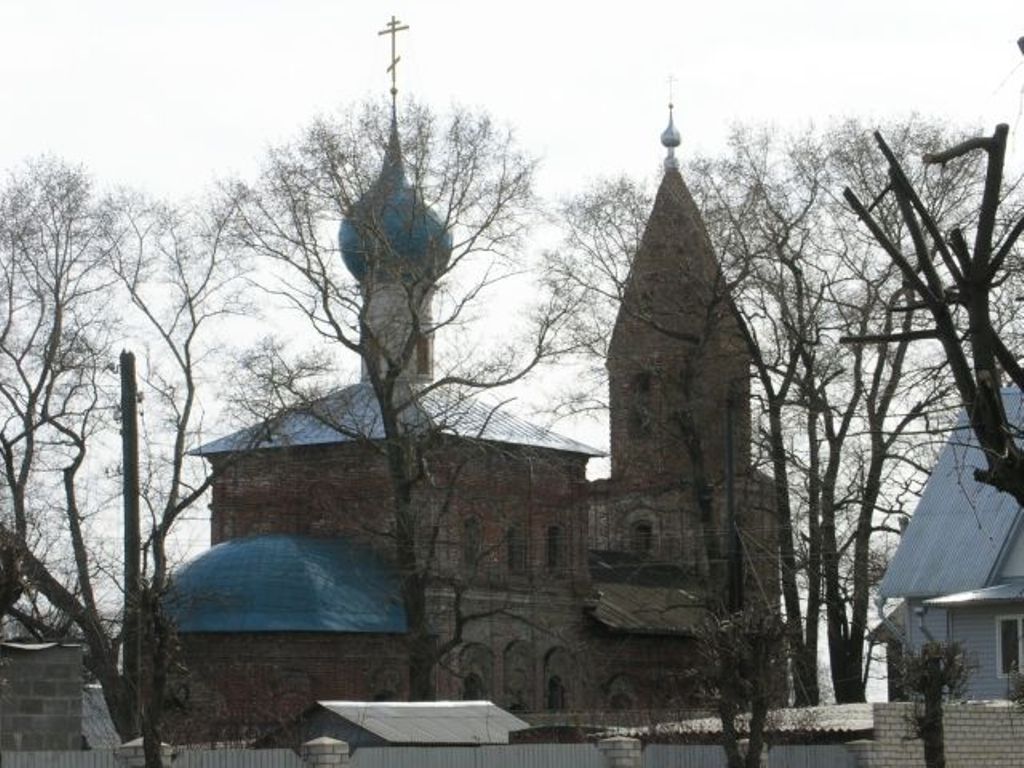
Church of Cosmas and Damian, 1175
Church of the Smolensk icon of the mother of God. It is better known in the city under the name “kosmy and Damiana”. Built in 1775. on the site of the ancient monastery of Cosmas and Damian. Built in 1777, it was closed by one of the first in 1926. In early 2004, with the blessing of his Eminence Kirill, Archbishop of Yaroslavl and Rostov, the parish of the Church of saints Cosmas and Damian of the Yaroslavl diocese of the Russian Orthodox Church was established. The temple is adapted for worship warm refectory of the temple and, although the temple has no special remarkable shrines, it has become a “home” for the surrounding residential area.
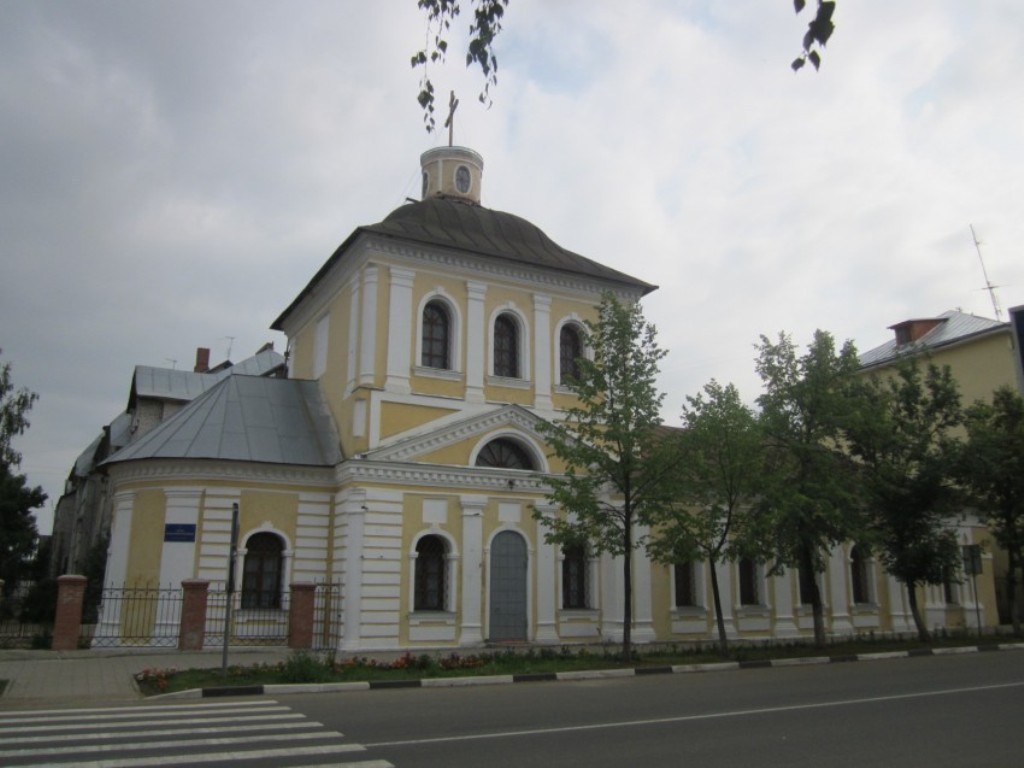
The Church of the Intercession of the blessed virgin Mary, 1795
The Church was built in 1808. The temple was then in a wooden version. After a terrible fire, the devout merchants of Rostov decided to restore the temple. Construction of the new stone Church began in 1795 and ended in 1803. In the ungodly 20-ies of XX century the temple was looted,in the zo-ies the temple was converted into a public dining room, removed all the domes and crosses. Since 2004 its restoration is carried out.
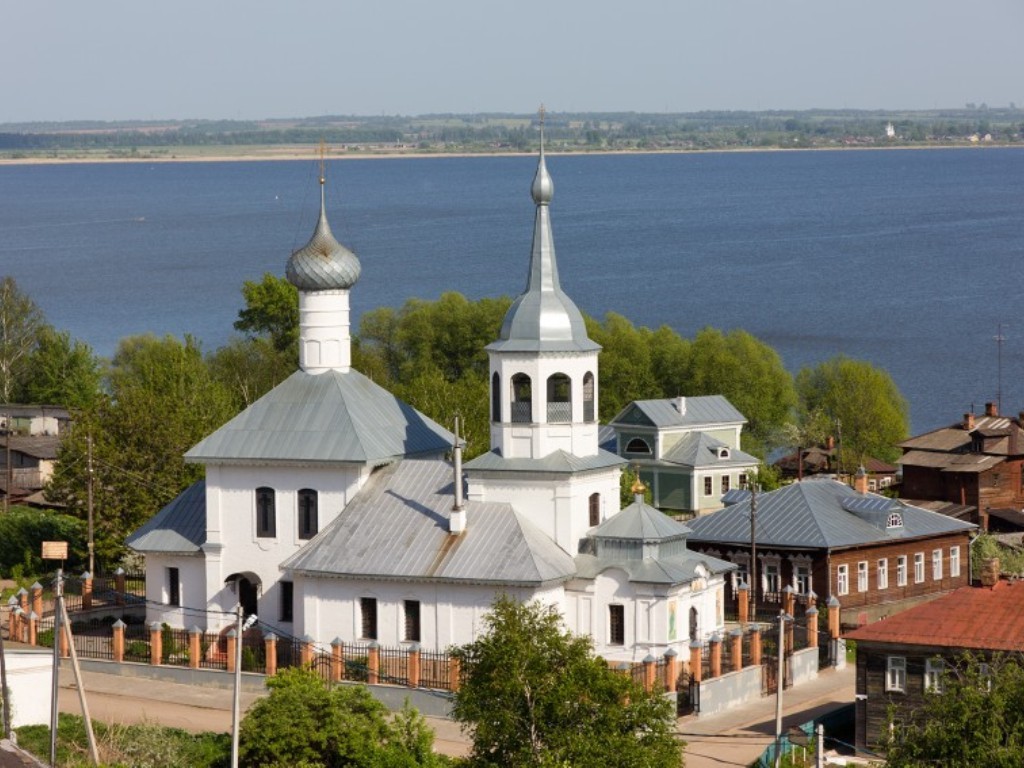
Church of St. Nicholas on Suspicion, 1745 – 1751
Stone two-altar Church, built in 1745 at the expense of parishioners instead of the old wooden. The main volume of the temple is a two-light one-headed quadrangle with a refectory and a tiered bell tower. The Limit Of Sorrow. In the 1930s, closed, broken, and completed the bell tower. Since 1998, its restoration began, and is now restored to its former forms.
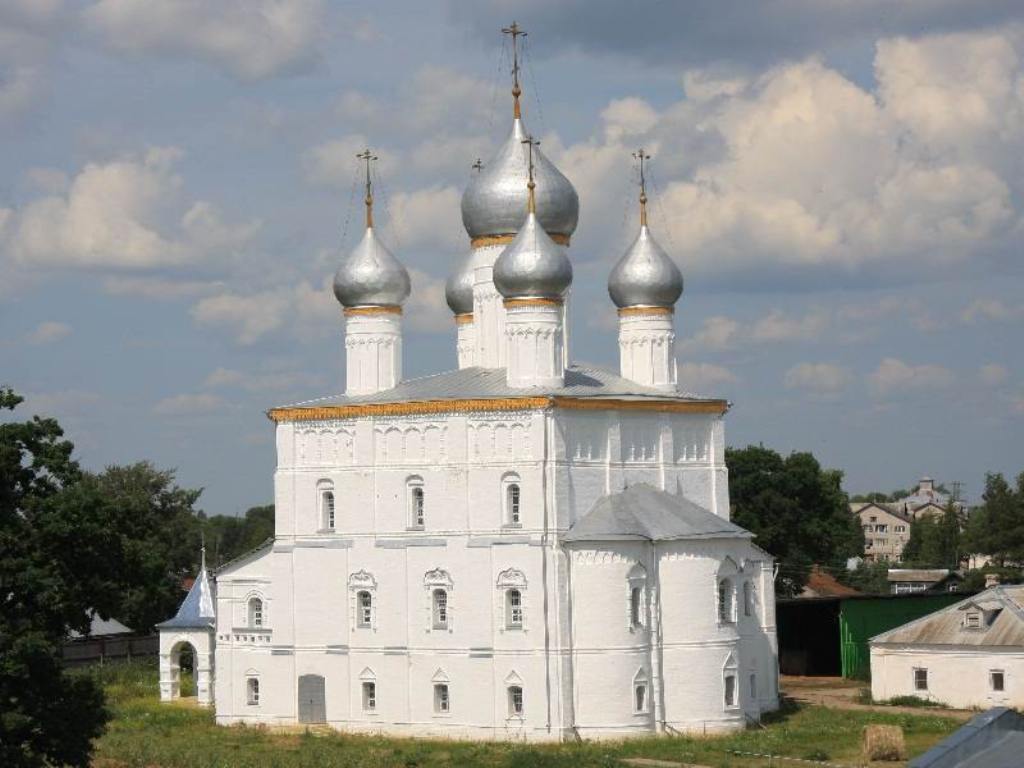
Church of the Savior on the Sands, XVII century.
Spasopeskovskaya Church was built as a Cathedral Church of the female Spaso-Pesotsky Princess of the monastery. The monastery was founded by Princess Maria, wife of Rostov Prince Vasilka, in the XIII century. Princess Mary was buried in 1271 under the wooden Church of the Saviour, which may have stood on the same place where the stone Cathedral now stands. It was built, judging by the inscription, in 1603. In the middle of the XVII century the building was rebuilt, but how much – still researchers could not find out.
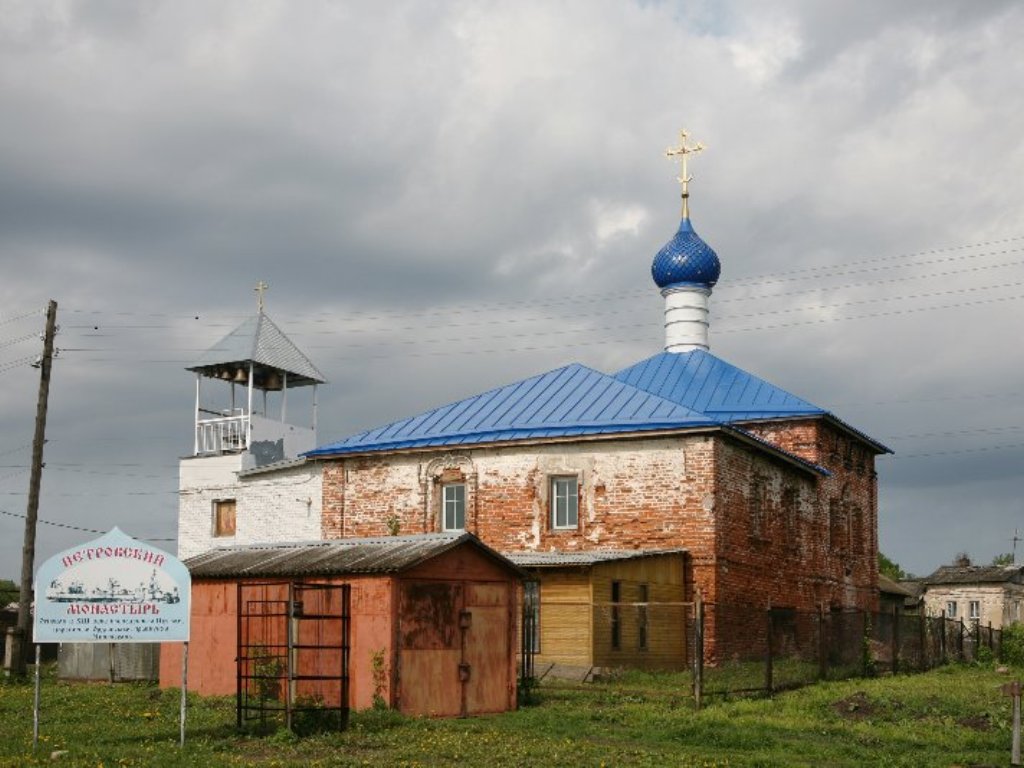
Peter monastery, XVII-XIX Centuries.
Rostov Peter monastery is one of the most ancient monasteries in Russia. It is located a mile from Rostov, Yaroslavl province, almost on the shore of lake Nero. The area surrounding the monastery is a lowland plain bordered on the right side by a lake and on the left by a forest. In spring, this lowland near the monastery is flooded by the flood of the lake and the river vexa Flowing from it, which gives the monastery surroundings a rather picturesque view. A small settlement called Petrovskaya was sheltered near the monastery.
Currently Peter’s monastery as an architectural ensemble is half destroyed. Four corner towers, the hegumen building and the Church of Praise of the mother of God (XVII century) have survived from the buildings. In the latest in Soviet times housed a brewery, and later from the office and workshops of the enterprise”, Rostovagropromstroy” brought the Church to a deplorable state. The walls of the monastery and the Cathedral of Peter and Paul dismantled brick.
Tel. +7 (48536) 6-42-53
Site: www.petrov-mon.ru
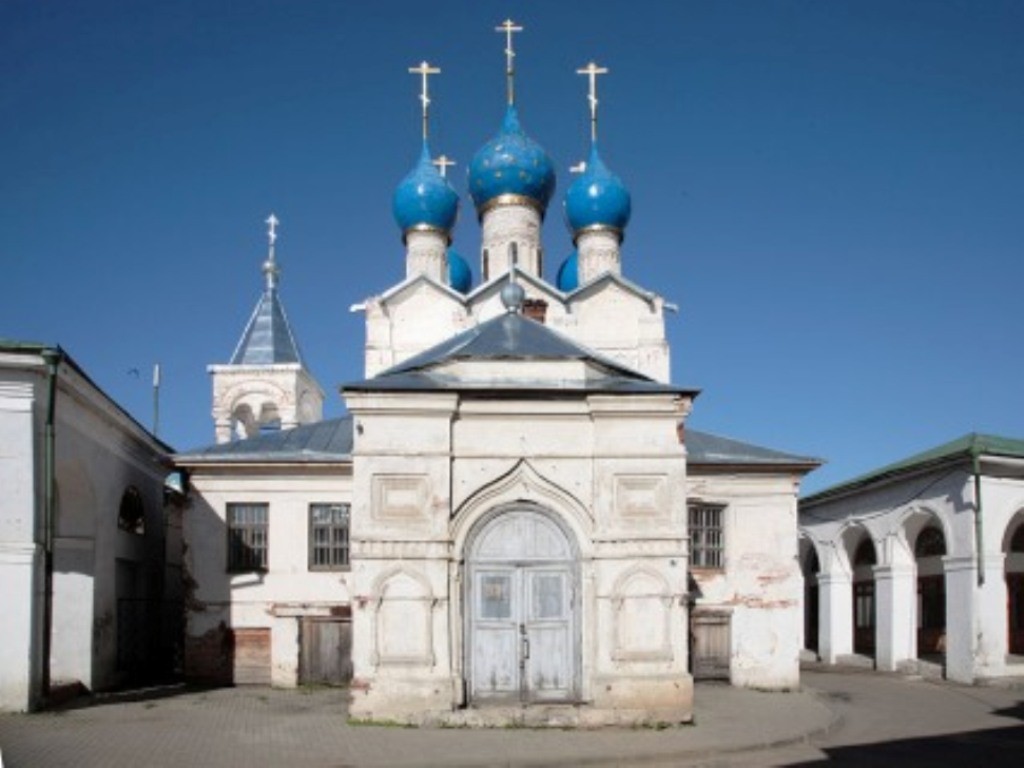
Church of the Savior at the Auction, 1685 – 1690.
The popular name of the Saved Ruina. It is “inscribed” in the plan of the Gostiny Dvor and is called so because it was among the shopping malls, for many years had no parishioners, and the source of its existence was “Ruga” – a special collection, donations. It was first built of wood in 1206. During the Polish-Lithuanian invasion it was looted and burned to the ground. About 40 years this place was empty. In 1654, in July, in Rostov started, “pestilence”, so strong that many people were dying, and there weren’t enough living to bury the dead. Not knowing how to deal with the epidemic, the Rostov on cash fees built on this site a wooden Church, in a strong fire in 1671 again burned to the ground. Extant Church of the Savior at the Auction was built on the same site at the expense of citizens in 1685-1690, when the Metropolitan was Jonah Sysoevich.
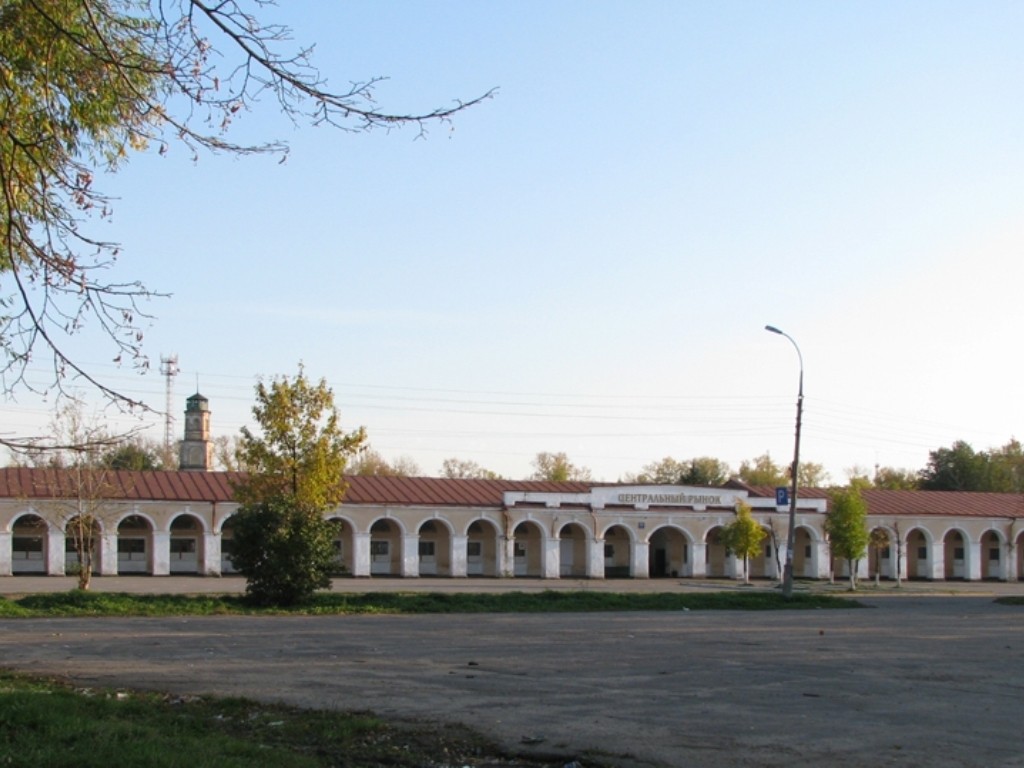
Mytny yard, 1830.
The Mytny Dvor complex was built in 1832. The name of the yard came from the word “Myto” – a fee for the transportation of goods to the auction. It is a long building in the classical style, framed on the North and South sides by galleries with arcades, separated in the center by a pass gate with large Gables. In the spring, during the days of the famous Rostov fair – the third in Russia in size – here, as well as Trading rows, there was a stormy trade. Now on Saturdays the territory of Mytny Dvor is occupied by the city market, so its purpose in fact for almost two centuries has not changed.
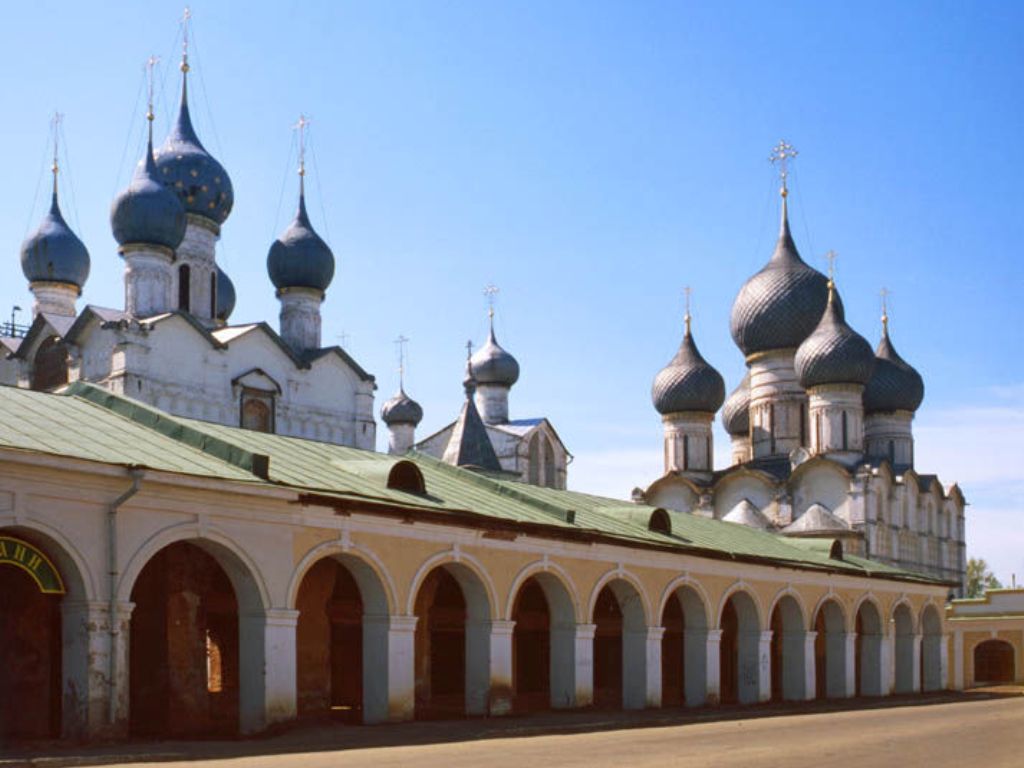
Gostiny Dvor, 1840 – 1841.
Built on the site of an ancient shopping area. Trade since 1839 is already in the new stone Gostiny Dvor, which occupies the perimeter of the whole block. The appearance of the complex has not changed since the XIX century, is now used for its intended purpose.
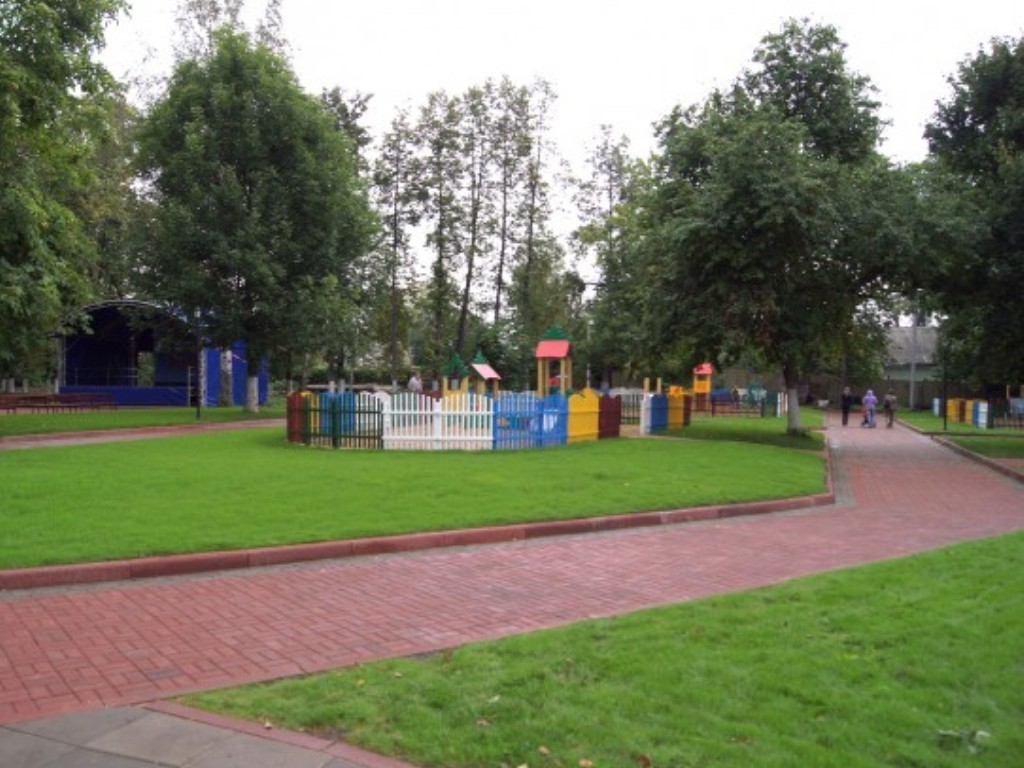
Garden city, mid XIX century.
The city Park was founded on July 31, 1830. At that time in Russia the improvement of cities was paid close attention. The provincial administration allocated to the merchant Khlebnikov 500 rubles for the construction of the garden. The merchant Khlebnikov not only did not steal the money, but also invested from his own pocket 363 rubles 26 kopecks. Last year the Park was significantly transformed. Several wonderful playgrounds have been built. Each Playground for children of a certain age, since Godovikov. For Russia — it is still rare. The embankment of lake Nero has been completely renovated.
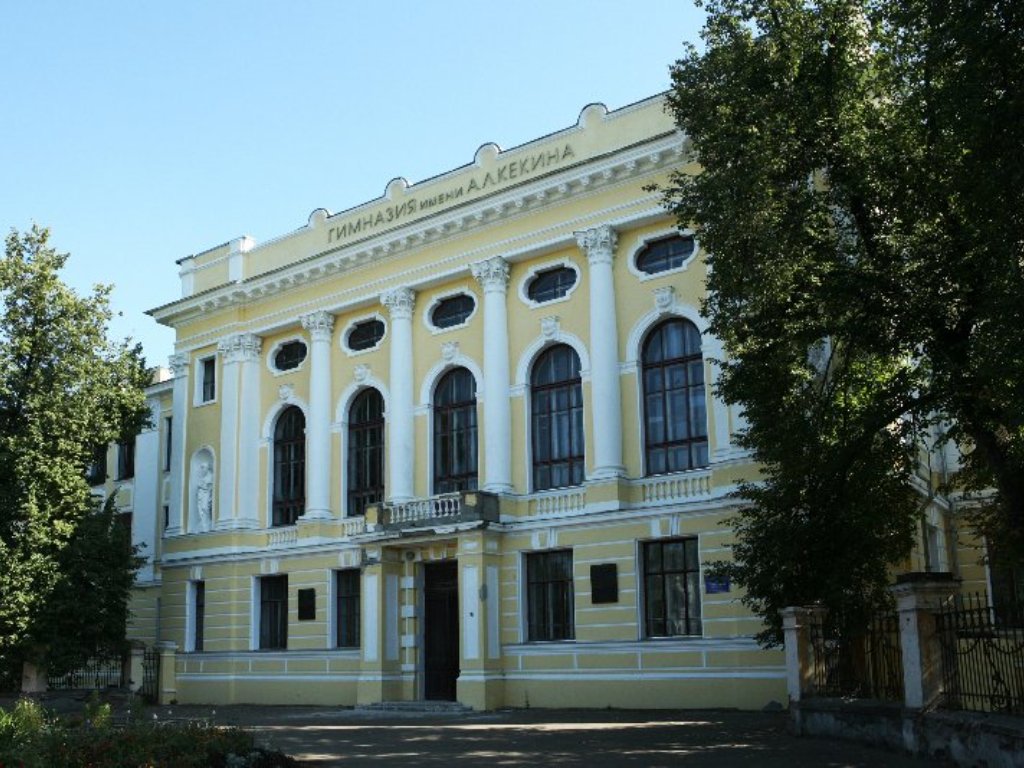
Kekin gymnasium, 1908 – 1910
Municipal educational institution. It was founded in 1910. In 1992, the school returned to the status of a gymnasium and was named after the Rostov merchant-patron Alexei Leontievich Kekin.
Tel. +7 (48536) 6-05-45
Site: www.gim-kekina.edu.yar.ru
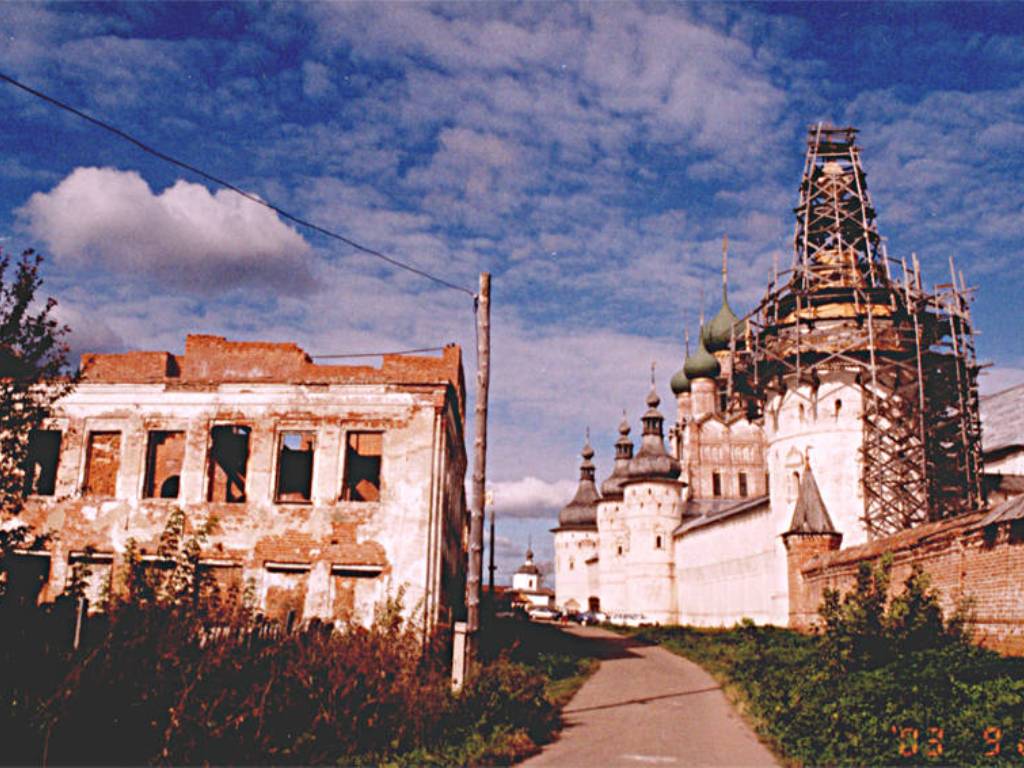
Stable yard, XVII century.
Located at the walls of the Rostov Kremlin – a unique structure, the only stable yard in Russia XVII century, extant. It was built in 1680-1690 years in the Metropolitan Ioasaf, Jonah Sysoyevich’s successor. Until recently, it was a broken walls and blockages of bricks, but in 2013 began the reconstruction of the stable yard.
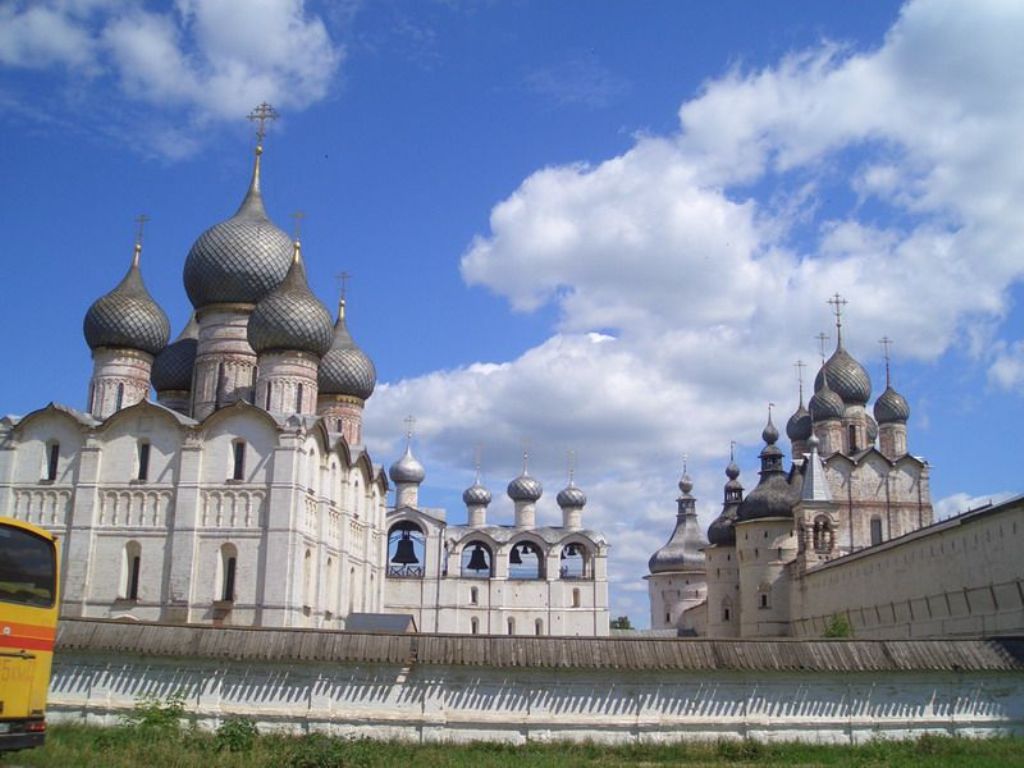
The state Museum “Rostov Kremlin»
152151, Yar. region, Rostov
Tel.+7 (48536) 6-15-02, 6-17-17, 6-32-94
Working hours: from 10:00 to 17:00 Seven days a week.
Site: www.rostmuseum.ru
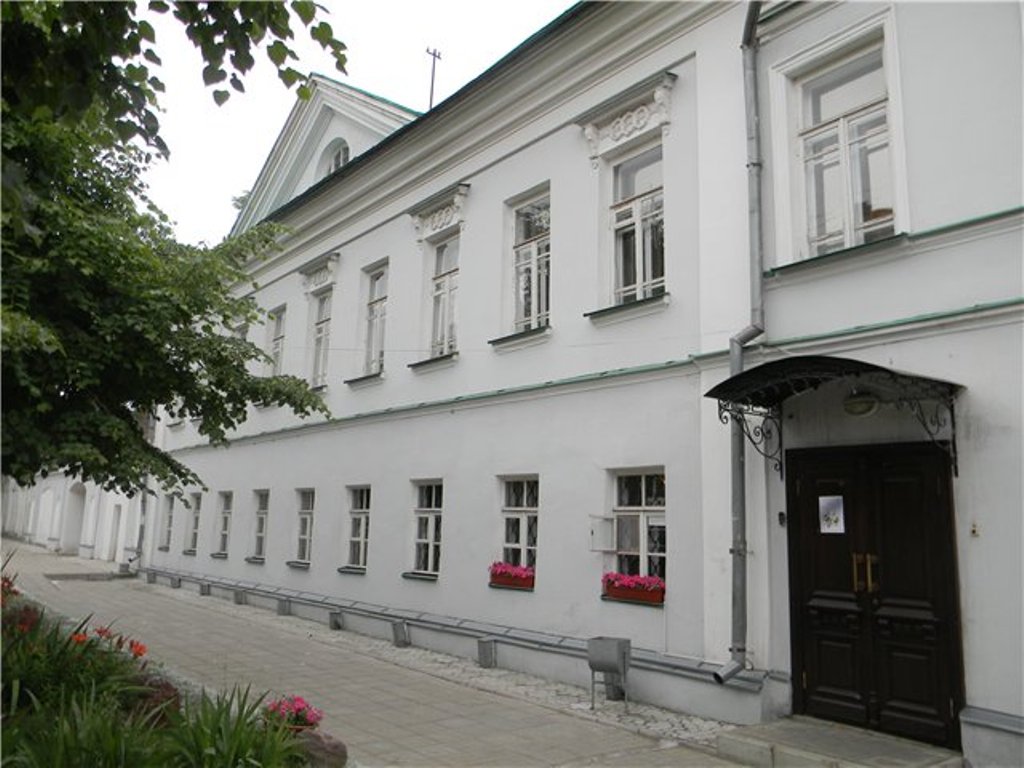
The Museum of Rostov merchants
152155, Yar. region, Rostov, Leninskaya street, 32.
Tel. +7 (48536) 6-40-99
Working hours: from 10:00 to 17:00, mon. and Tue. – output.
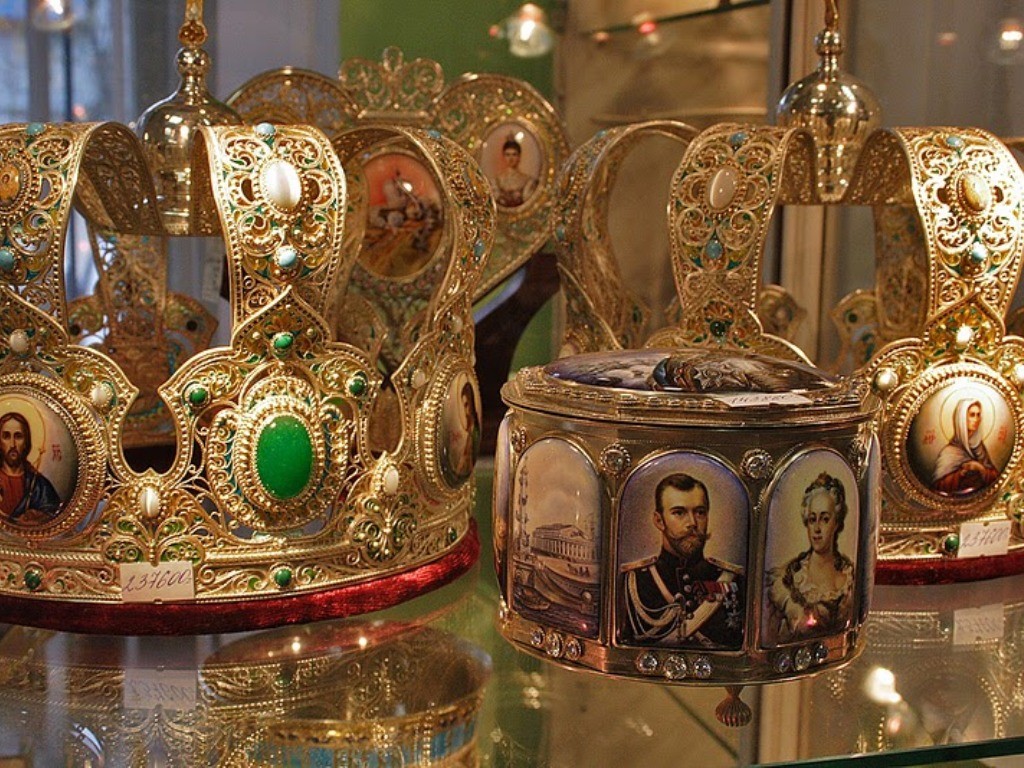
The Museum of the Factory “Rostov finift»
152155, Yar. region, Rostov, borisoglebskoe highway 3.
Tel. +7 (48536) 7-49-21, 7-52-29
Working hours: daily from 9:00 to 16:00, sat., sun. – by appointment.
Site: www.finift-nhp.ru
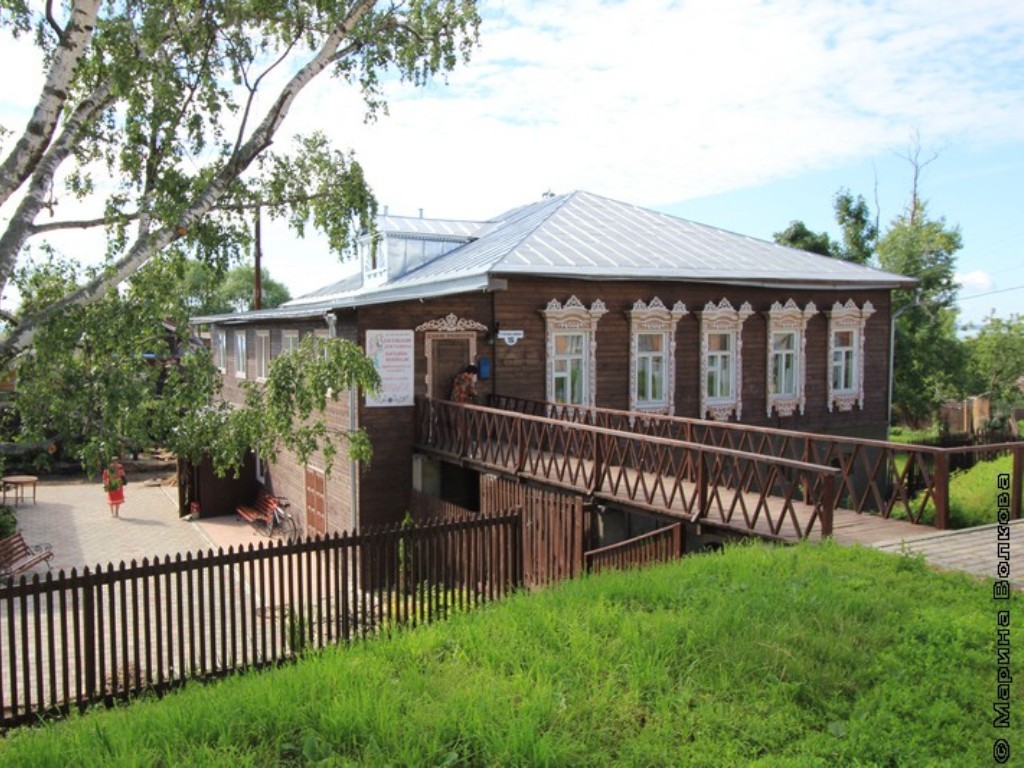
Rostov House of crafts
152151, Yar. region, Rostov, 2nd Tolstoy embankment, 16.
Tel.+7 (48536) 6-72-23, +7 (906) 631-58-57
Working hours: daily from 10:00 to 18:00.
Site: www.domremesel.com
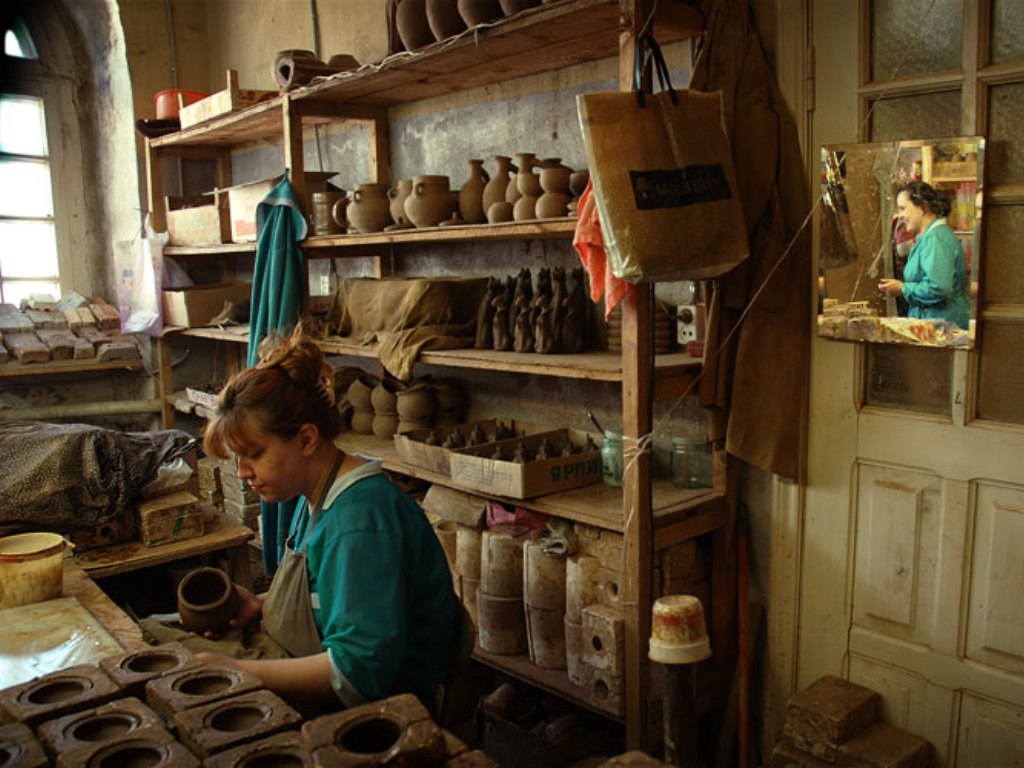
Workshop “black-Glazed ceramics»
152151, Yar. region, Rostov, Kremlin
Tel.+7 (48536) 6-44-52, +7 (906) 631-58-57
Working hours: daily from 9:00 to 17:00
Site: www.domremesel.com
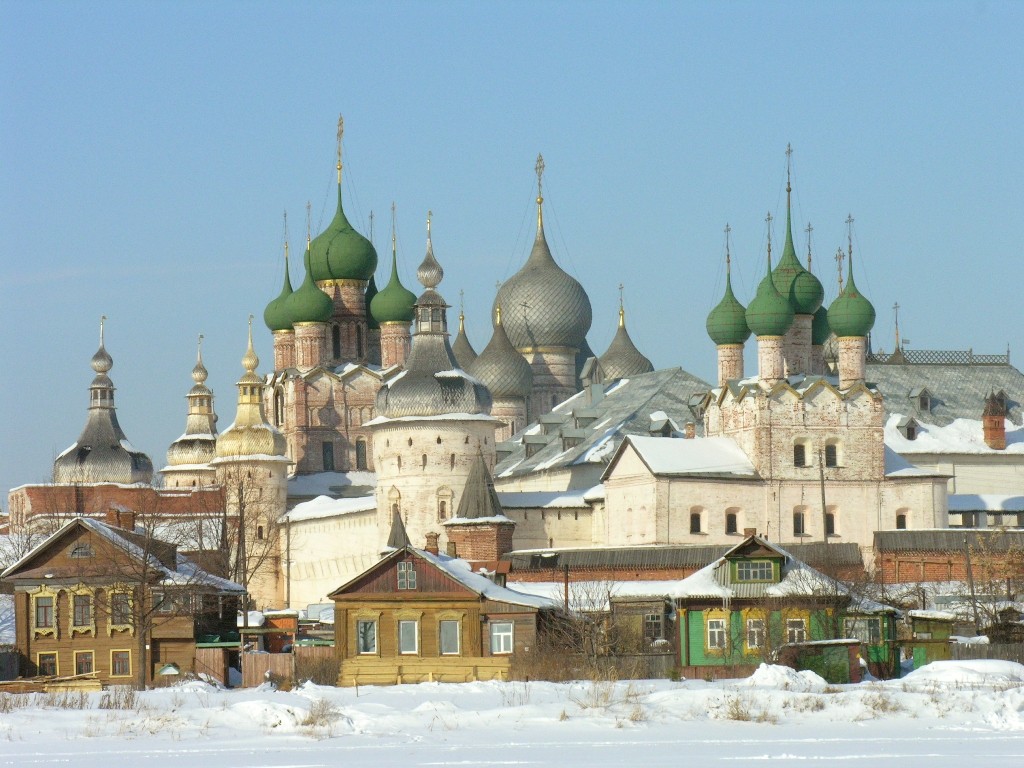
«Artist’s studio»
152151, Yar. region, Rostov, Petrovicheva str., 19/3
Tel. +7 (910) 663-81-27
Working hours: daily from 10:00 to 17:00.
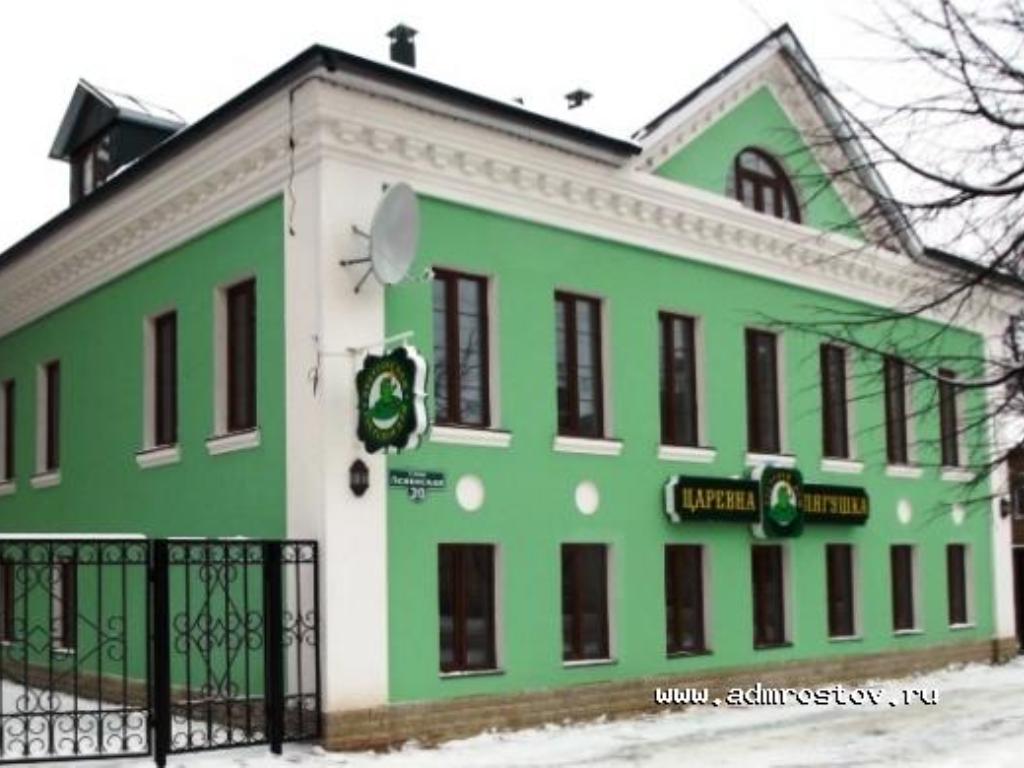
Frog Princess Museum
152151, Yar. region, Rostov, Leninskaya str., 20
Tel. +7 (48536) 7-54-31, 7-50-60.
Working hours: daily from 10:00 to 18:00.
Site: www.carevna.net
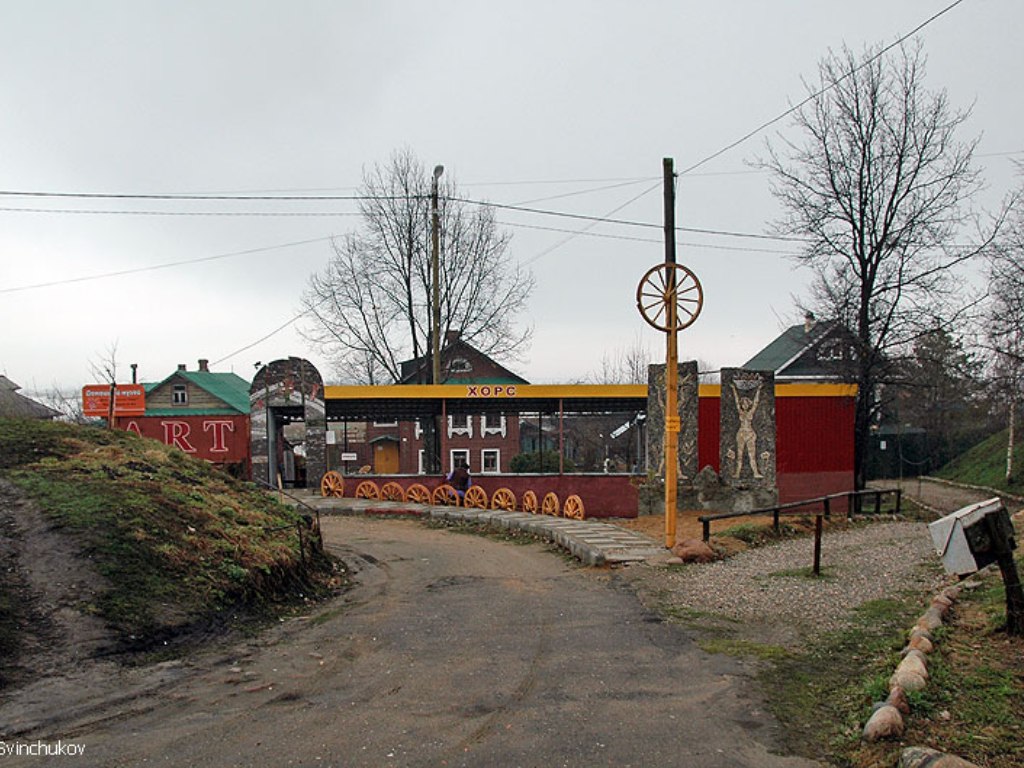
LLC Creative Association “horse»
152151, Yar. region, Rostov, ul. Suspicious, 31.
Tel. +7 (48536) 6-24-83.
Working hours in winter: from 12:00 to 18:00.
Working hours in summer: from 12:00 to 21:00.
Site: www.khors.org
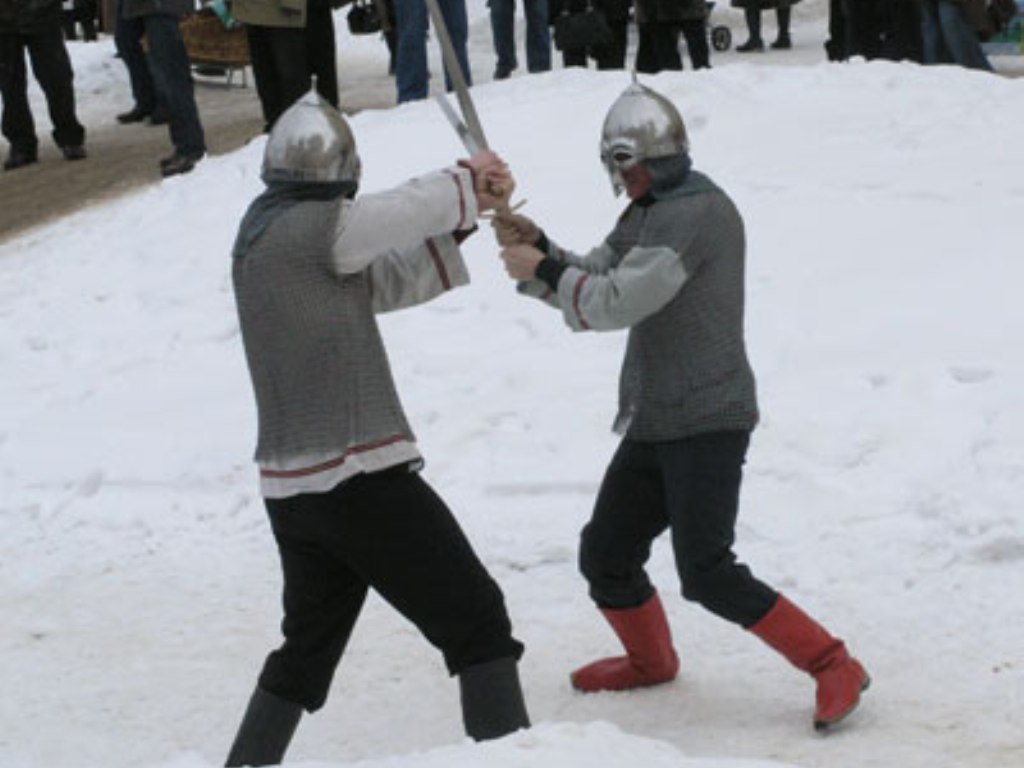
“Giant farmstead Alyosha Popovich»
152155, Yar. region, Rostov, Frunze str., 21A.
Tel.+7 (48536) 6-60-02, 6-60-03, +7 (961) 153-06-10.
Working hours: daily from 10:00 to 19:00.